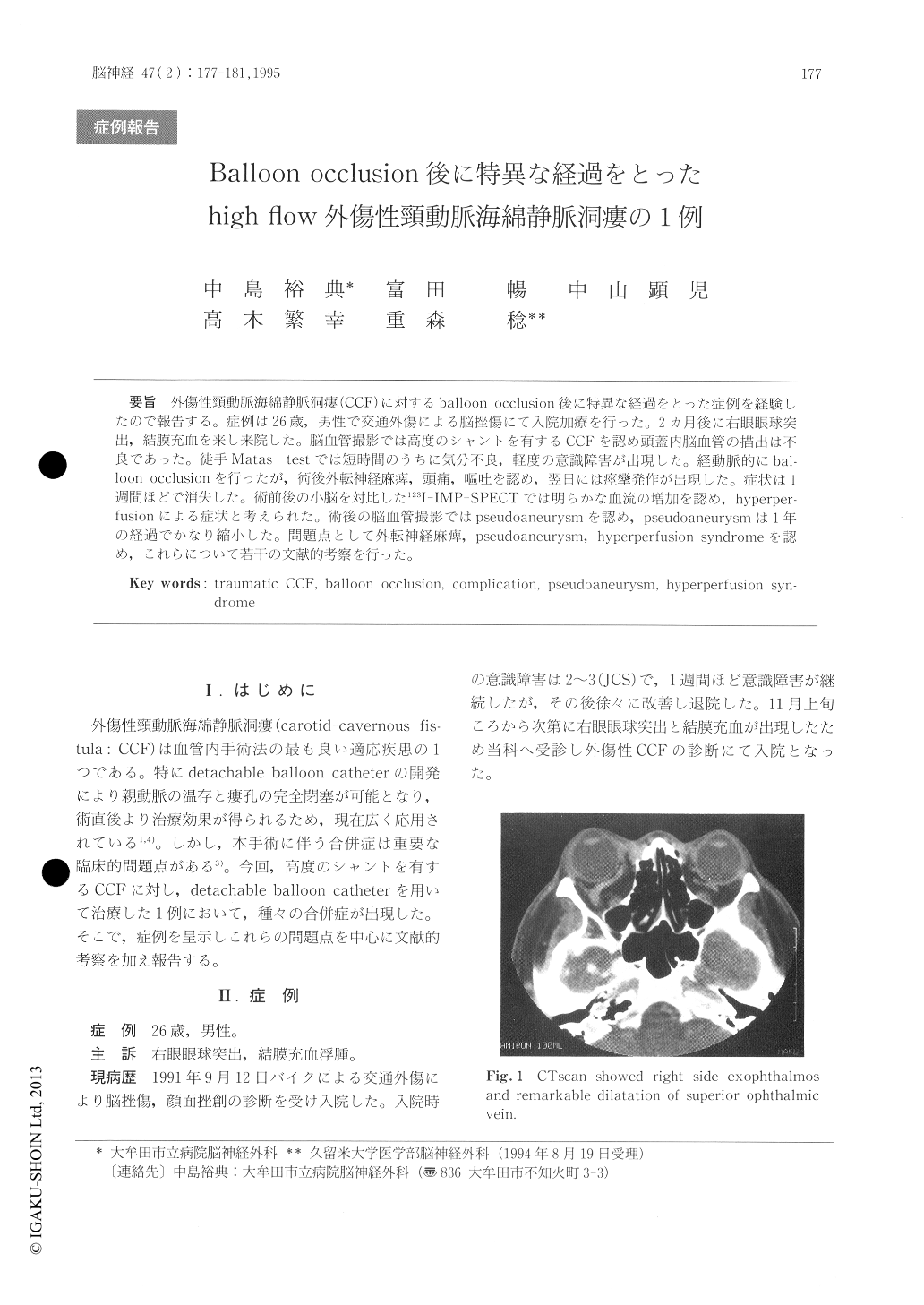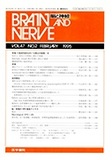Japanese
English
- 有料閲覧
- Abstract 文献概要
- 1ページ目 Look Inside
外傷性頸動脈海綿静脈洞瘻(CCF)に対するballoon occlusion後に特異な経過をとった症例を経験したので報告する。症例は26歳,男性で交通外傷による脳挫傷にて入院加療を行った。2ヵ月後に右眼眼球突出,結膜充血を来し来院した。脳血管撮影では高度のシャントを有するCCFを認め頭蓋内脳血管の描出は不良であった。徒手Matas testでは短時間のうちに気分不良,軽度の意識障害が出現した。経動脈的にbal—loon occlusionを行ったが,術後外転神経麻痺,頭痛,嘔吐を認め,翌日には痙攣発作が出現した。症状は1週間ほどで消失した。術前後の小脳を対比した123I-IMP-SPECTでは明らかな血流の増加を認め,hyperper—fusionによる症状と考えられた。術後の脳血管撮影ではpseudoaneurysmを認め,pseudoaneurysmは1年の経過でかなり縮小した。問題点として外転神経麻痺,pseudoaneurysm,hyperperfusion syndromeを認め,これらについて若干の文献的考察を行った。
We treated a patient with a high flow traumatic carotid-cavernous fistula (CCF) by transarterial balloon occlusion.
A 26-year-old male sustained an injury of the head. After 2 months he was admitted to our hospital due to exophthalrnos, congestion of the palpebral conjunctiva. Right common carotid an-giography showed a CCF with high flow shunt. He was treated by the endovascular balloon technique. Following the operation, abducens nerve palsy, headache, vomiting and convulsion developed and disappeared gradually within one week.

Copyright © 1995, Igaku-Shoin Ltd. All rights reserved.


